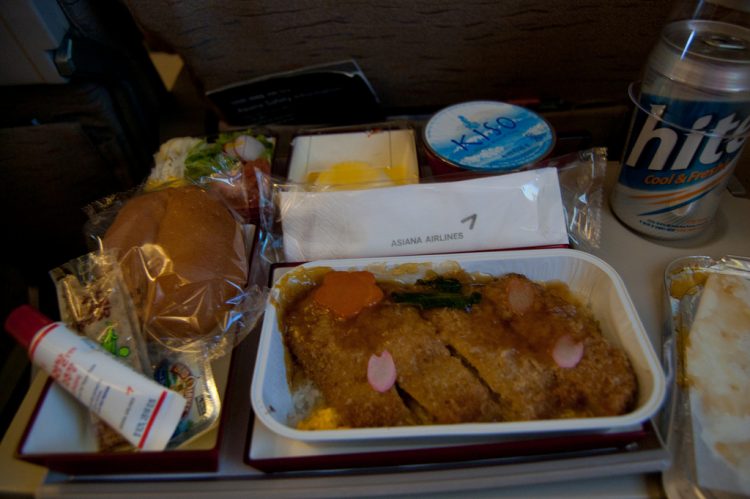You’ve boarded your fight, booked your day-stay hotel — and here comes the flight attendant to ask whether you’d like chicken or pasta. Immediately, your excitement is dampened with thoughts of reheated, dried out mystery meat or cardboard pieces in a red sauce.
Don’t worry. In-flight airline meals have come a long way in the last decade. And even if you end up with mystery meat, hacks exist to make your meal better so that you’re ready to explore once you’ve landed and checked into your day room.
Why are in-flight meals known for being so bad?
Airline chefs are challenged to make meals that would be appetizing on the ground taste just as good in the air. This is because the dry pressurized cabin air at 30,000 feet changes our sense of taste. The constant background noise on airplanes also affects our tastebuds, dulling sweet foods and enhancing savory ones. Then there’s the need to have meals that can be cooked, cooled, and then reheated again, which is arduous, to say the least.
The quality of an in-flight meal also depends on the airline and the length of a flight. A two-hour flight on a budget airline won’t offer the palate-teasers that a transcontinental trip on a top airline will. Upgrading to Premium Economy, Business, or First Class also gets you a wider range of high-quality foods.
If you do get served a bad meal, you can always turn to social media. Maybe you’ll get an apology from the airline.
In-flight foods to avoid
We’ve already told you what to avoid eating before and on the plane. But not all in-flight meals are created equally. Salty foods will taste saltier. They’ll also make you more dehydrated. Fried fast foods, aside from being generally just as unhealthy as a cheap in-flight meal, will leave you feeling bloated.
Airlines with the best in-flight airline meals
If you luck out, one of these airlines will offer you a gourmet chef-approved meal, even in economy class. They are consistently cited as the best in-flight airline meals for long-haul flights.
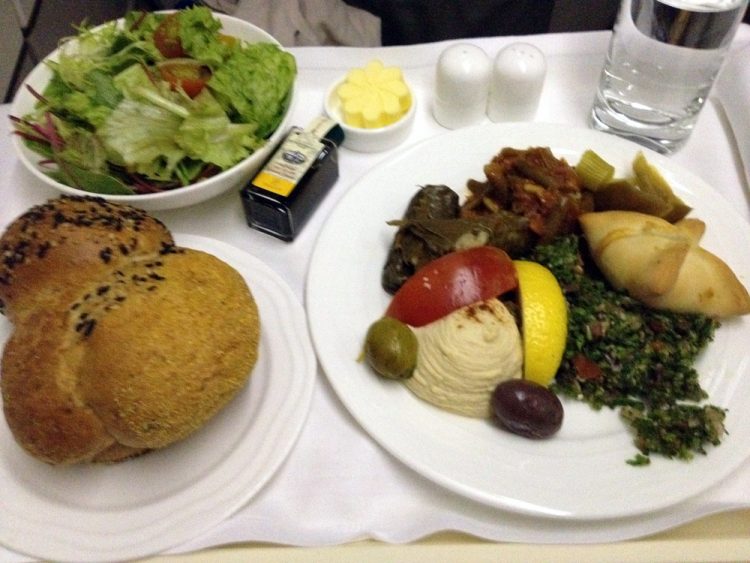
Emirates
Whether you’re getting seven courses on bone china in first class or three courses made from fresh, regional ingredients, Emirates is well-known for its excellent food. You can try some of their dishes at home with recipes from the website, although they may taste better without the dehydration, pressure, and noise of an airline cabin.
Air France
If you don’t like the free meal options on your transcontinental flight, opt for an a la carte meal from a top French chef. Whether savory traditional French foods prepared with authentic local French products or an exclusive seasonal meal from a top restaurant, Air France has something for every taste.
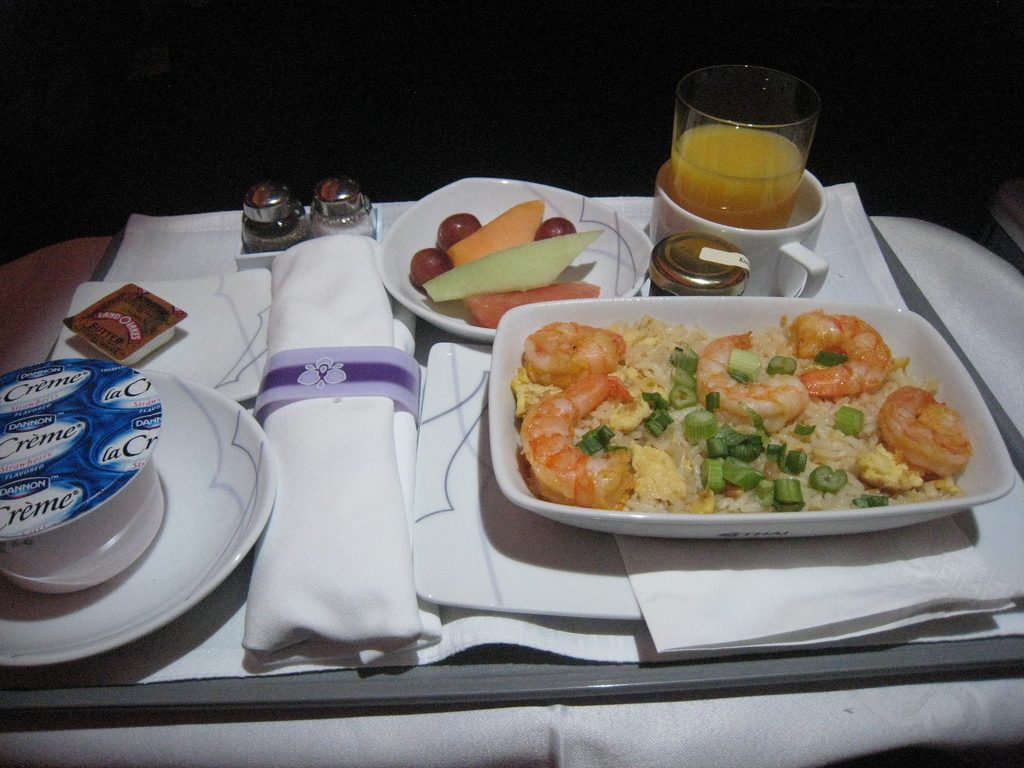
Thai Airways
Imagine seasonal ingredients and fresh, artisanal produce from sustainable Thai farms, cooked into menus inspired by Thai and global cuisines. Although you might not get a gourmet chef meal in economy class, the food is well-rated. Rumour has it that their breakfast croissants are incredible.
5 tips to hack your in-flight meal
1. Pack your own
Especially on budget airlines where you are getting low-quality food for an exorbitant markup, it’s best to pack your own meal. Just be sure to bring security-friendly foods (hint: not yogurt) or pick something up after security before you board the plane. A healthy option is cut vegetables and fruits, which can perk up an in-flight meal. You can bring a favorite sandwich, a rice bowl in a reusable container, or any other easily portable meal to substitute for the main dish if you want, too. If your flight is overnight or includes breakfast, you may want to bring a container of quick-cooking oatmeal or a favorite breakfast bar to avoid questionable pastries at an hour your body is not sure of.
2. Tomatoes rule
Most long-haul flights will let you order a special meal from a pre-selected list up to 24 hours in advance. Opt for Asian or Indian vegetarian for a spicy and generally tasty choice. Tomato-based meals, which are umami or savory flavored, will taste more intense than salty or sweet foods at the noise level on airplanes, according to a 2015 Cornell study. So anything with a tomato sauce or base is a good choice. Just beware if you have a sensitive stomach or are prone to heartburn — the trade-off for better flavor may be hours of discomfort.
3. Make it spicy
Put your favorite spices into small makeup pots and mix your own favorite flavors. Focus on umami flavors such as nutritional yeast, cumin, and paprika, or hot spices like chili powder. You can bring up to 12 ounces of dried spices in a carry on through security at American airports. Small bottles or single-serving packs of soy sauce, peanut butter, ketchup, and hot sauce are good choices to liven up any depressing in-flight meal.
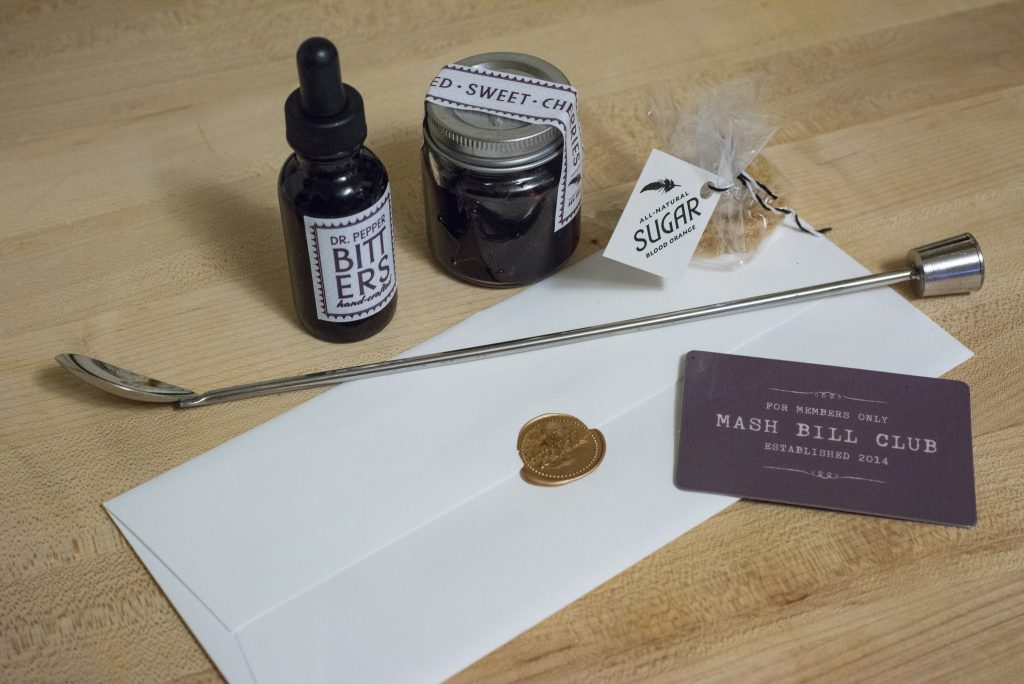
4. Mix it up
If you do decide to drink alcohol, make it more fun with a mini cocktail kit. You can buy one at various stores, make your own with an orange and tiny bottles of simple syrup and bitters for an old fashioned — or whatever else you need to mix your drink of choice. Simply order your liquor and mixer, then stir it up!
5. Be a little nutty and cheesy
For extra crunch, flavor, and nutrition, bring chia seeds, crushed nuts (be mindful of passenger allergies), and shredded hard cheeses that can go long periods without refrigeration. These additives add a little something extra to your limp in-flight salad or pasta dish. They can also and can perk up questionable vegetarian meals with extra protein if you opt for meatless.
In-flight meals are improving all the time, even in economy class, where sometimes it feels like you are paying a fortune for (literal) peanuts while sitting as close as possible to strangers. Air travel is so common now. Over 4 billion individual flights were taken in 2017 alone.
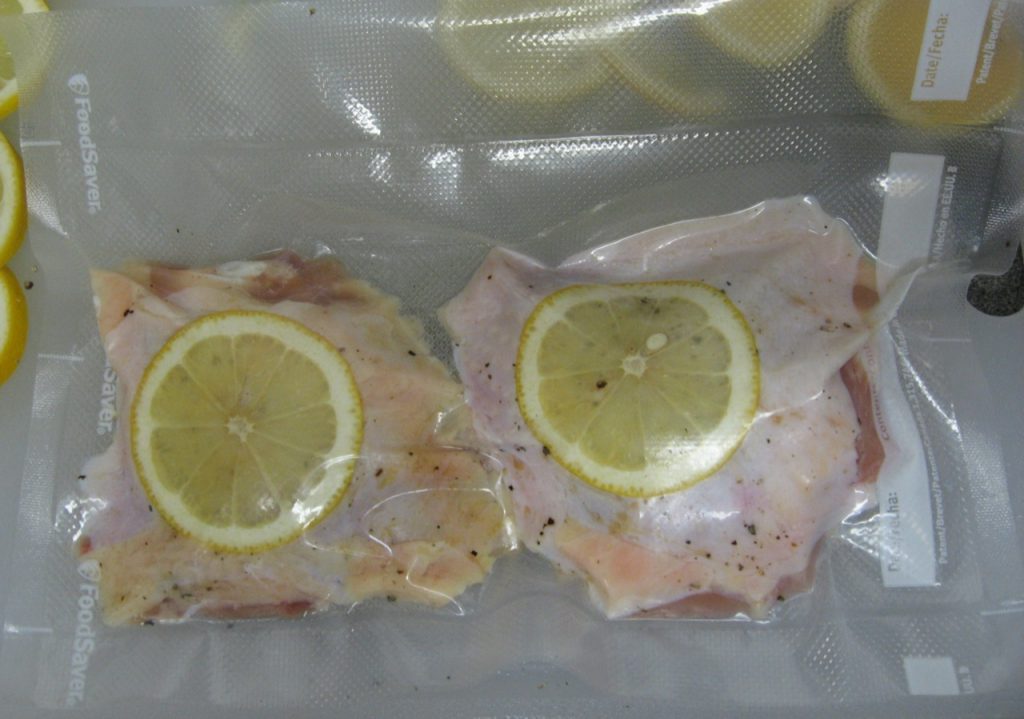
And even with cost-cutting, airlines compete on more than price. Airplane food, especially on mid-range carriers, can only improve. Airlines are trying different techniques, like sous-vide, to keep moisture in food and increase flavor. Individualized options are more common than ever, with a range of dietary needs from vegetarian and vegan to kosher and gluten-free accommodated. So the next time you fly, take heart. You can eat well and arrive at your day stay hotel ready for adventure.
Tell us your best in-flight meals and hacks in the comments!

Image Credits:
Featured image: “Airline meal” by Minyoung Choi via (CC BY-SA 2.0)
“Emirates Mezze” by Krista via (CC BY 2.0)
“Thai Airways” by Trans World Productions via (CC BY-ND 2.0)
“Pappy Van Winkle Tasting – Old Fashioned Kit” by Edsel Little via (CC BY-SA 2.0)
“Fried Chicken (sous vide)” by Arnold Gatilao via (CC BY 2.0)

